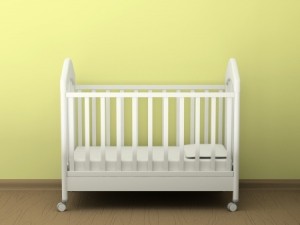A safe crib for your baby
 Crib safety has come a long way over the past 10 years. Many of the cribs being manufactured today are substantially safer than older cribs. And we’ve learned there are several things that parents should (and shouldn’t) do to keep babies sleeping safely. Here are some of the most effective crib safety tips, from the U.S. Consumer Product Safety Commission and other safety organizations:
Crib safety has come a long way over the past 10 years. Many of the cribs being manufactured today are substantially safer than older cribs. And we’ve learned there are several things that parents should (and shouldn’t) do to keep babies sleeping safely. Here are some of the most effective crib safety tips, from the U.S. Consumer Product Safety Commission and other safety organizations:
• Never place pillows or thick quilts in a baby’s sleep environment. It’s one of the best safety tips around, but it can be hard to do because you want your baby to be comfy. However, they all pose suffocation hazards.
• Do not use a crib with gaps larger than two fingers between the sides of the crib and the mattress. The spaces between the slats and other places on the crib should NOT be greater than 2 3/8 inches wide. Check the mattress, too. Federal law requires that a full-sized crib mattress must be at least 27 1/4 inches wide by 51 5/8 inches long and no more than 6 inches thick.
• Carefully assemble a new crib. Mistakes in assembly can pose safety risks. Not sure about something? Call the manufacturer’s toll-free consumer help line. Check for any recalls, especially if you’re getting a secondhand crib or one that you used with another child. Know that drop-side cribs, which let parents raise and lower one side to get the baby out, are no longer considered safe.
• Don’t use an old crib. A crib is something you’ll want to buy new if at all possible. At the very least, pass on any crib that’s 10 years old. If in doubt, get a newer one. Consider purchasing a JPMA-certified, full-sized crib with stationary sides.
• Don’t place a crib near a window with blinds, curtain cords or baby monitor cords — they all pose a strangulation risk.








